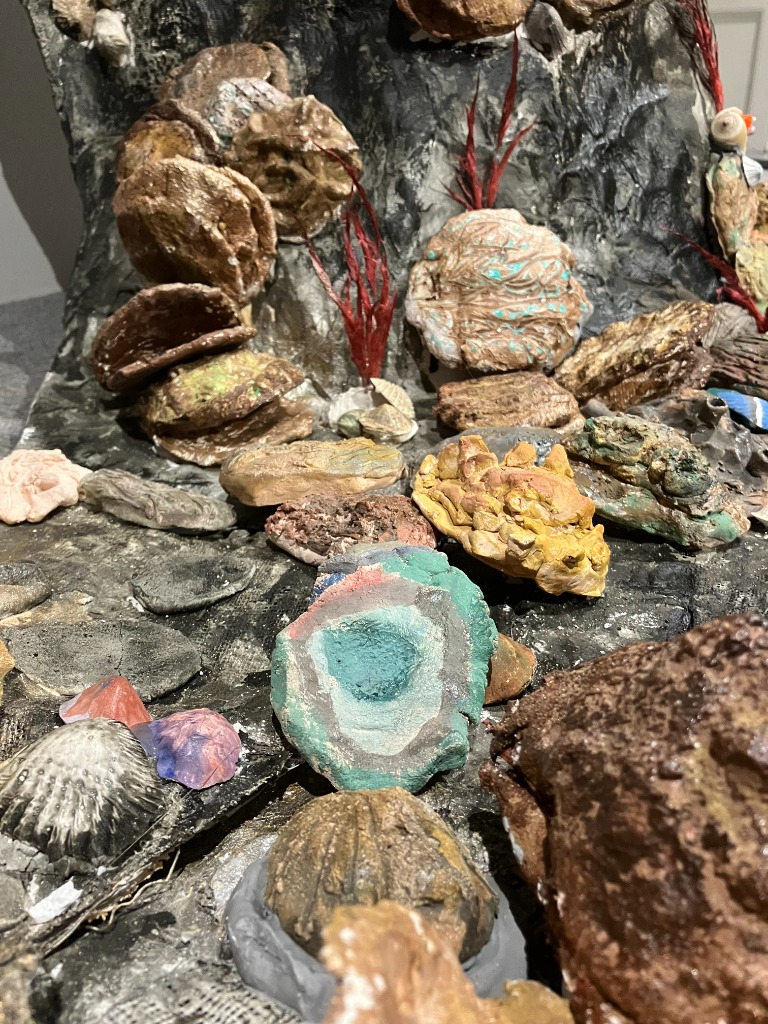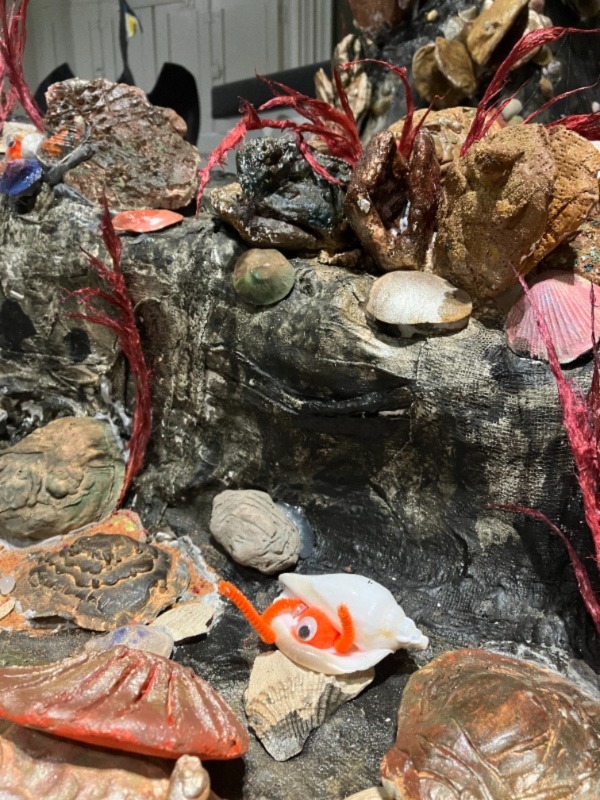Preston Park Museum is showcasing an oyster reef sculpture that children at a local school have created. The creative artwork, which is currently on display in one of the museum galleries, was created by children at Yarm School using a variety of materials including craft oysters, shells and rocks.
It was produced as part of a Tees Rivers Trust Oyster project to save the declining oyster population in the River Tees.
Reuben Kench, Stockton-on-Tees Borough Council’s Director of Community Services, Environment and Culture, said: “We’re delighted to showcase the impressive oyster sculpture at Preston Park Museum, which the students at Yarm School have clearly worked hard to create. We’re keen to support awareness of the important River Tees environmental project, which this model highlights. Visitors to the museum can see the work in our Green Gallery, from where they can also see the meandering River Tees flowing through a mixed habitat of woods and fields.
“We would encourage visitors to come along and see this detailed sculpture in person, especially during the upcoming school holidays. The museum is packed with fascinating rare and unique objects that tell important stories about our people and our history. Preston Park is always a great day out with lots to see and do.
“While they are there, visitors can explore the rest of the museum and Victorian Street – with a full Easter family activities programme, an Easter weekend farmyard event, the reopened Walled Garden and the new Great British Comic exhibition.”
Children at Yarm School, from nursery to year 6, worked in their art department, to create the sculpture.
Rachel Shepherd, art lead at Yarm Prep School said: “I think this project highlights the power of art to inspire and educate. The children have learned about the local conservation effort and worked together to raise awareness for a project which will benefit the health of the River Tees for years to come.”
Tees Rivers Trust is committed to improving and conserving the River Tees and its habitats and has been working to increase the larvae population and settlement areas for native oysters in the river.
Find out more about visiting us

